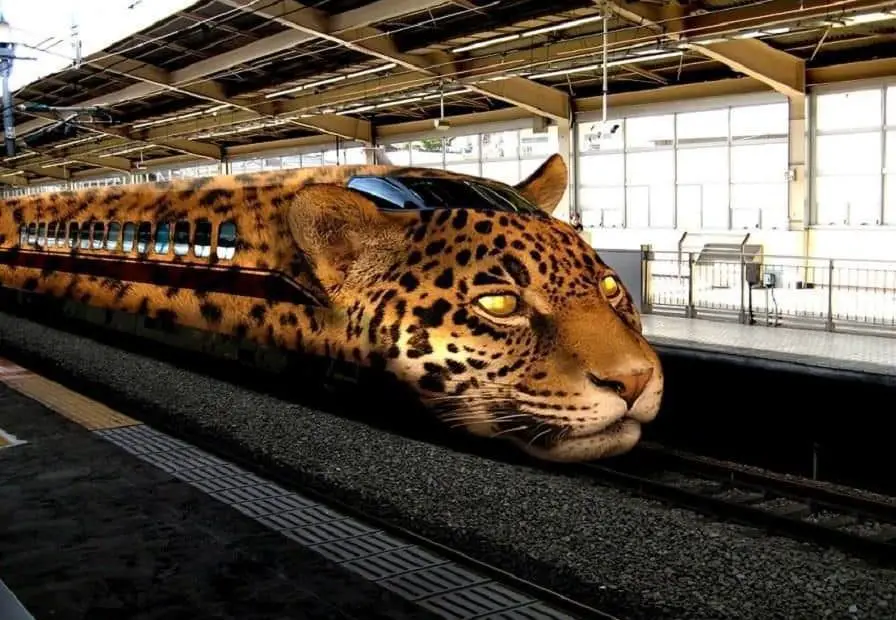Trains are much safer and comfortable to travel if we compare them with road vehicles, passenger planes or cruises.
But what if you want to travel long distances with a minimum amount of journey time, conventional trains have limitations in terms of speed.
To solve this issue, Japanese engineer Hideo Shima supported by Shinji Sogō, developed the first highspeed line, Tōkaidō Shinkansen, to connect Tokyo and Shin-Osaka through 0 Series Shinkansen train sets.
Since then, the speed of this type of railway technology has drastically improved.
But you might ask, how fast does a bullet train go?
The average speed of a bullet train is around 250 km/h (155 mph) as to qualify as High-speed rail (HSR) average high corridor speed over 200 km/h is required.
But through advanced technological developments, some HSRs are exceptionally fast. With the latest invention of Maglev trains, we only expect it to improve further.
Some prototype examples include,
Recently, Japan tested its fastest ALPHA-X train in 2016, and we can expect from 2046, Japanese railways will operating train.
On 21 April 2015, the seven-car railway prototype from the L0 series on the Chūō Shinkansen railway line set the fastest world speed record for rail vehicles by achieving the speed of 603 km/h (375 mph).
In case if you are wondering the bullet train in service with the highest operational speed, not maximum speed set for records.
Here are the top 10 fastest trains in the world 2023:
10. ETR 400 (Frecciarossa 1000)
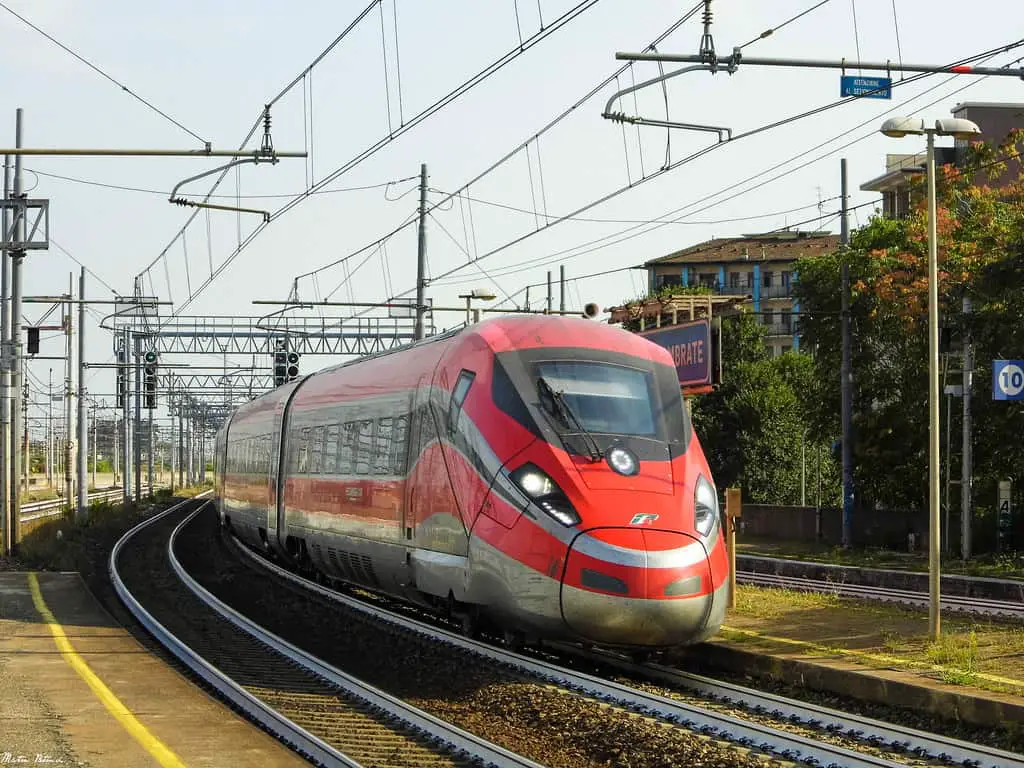
The ETR 400, also known as the Frecciarossa 1000 or V300ZEFIRO is a true symbol of luxury and speed. This magnificent train belongs to Bombardier’s ZEFIRO class and is a revamped version of the Frecciarossa ETR 500. Its exotic looks, opulent design, and remarkable speed make it equivalent to a “supercar” among ordinary trains. In 2010, Trenitalia, an Italian rail operator, ordered 50 trainsets of the Frecciarossa 1000. The high-speed rail systems were built in Italy through a partnership between Bombardier and AnsaldoBreda, a subsidiary of the Finmeccanica Group. Gruppo Bertone, renowned for its designs for Lamborghini and other cars, designed the train’s captivating appearance. With 16 traction motors providing an acceleration of 0.7 m/s², the ETR 400 can reach a maximum speed of 360 km/h (220 mph). However, its commercial operational speed is set at 300 km/h (190 mph).
9. Euroduplex
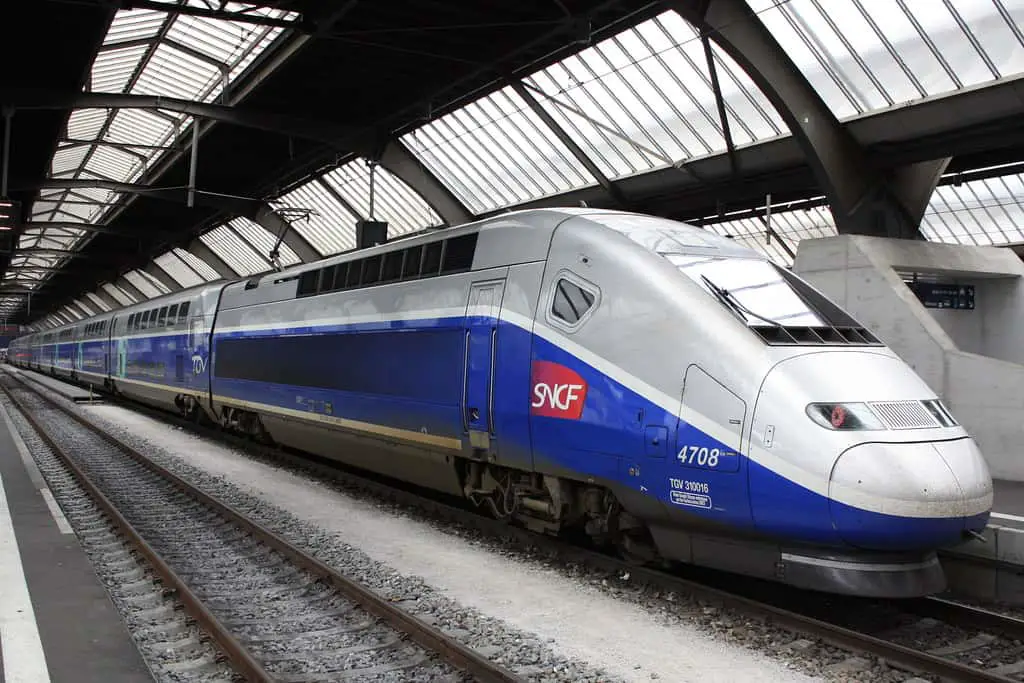
Alstom’s Euroduplex, the third-generation high-speed train for TGV (Train à Grande Vitesse), takes the ninth spot on our fastest train list. Operated by French National Railways (SNCF), this train showcases a perfect blend of innovation and performance. Most of the Euroduplex’s technical specifications were adapted from its predecessor, resulting in reduced weight and enhanced aerodynamics. Since December 2011, it has been serving passengers, offering a capacity of 1020 travelers at a time. The Euroduplex connects high-speed rail networks in France, Switzerland, Germany, and Luxembourg, providing seamless travel experiences across borders.
8. E5 and H5 Series Shinkansen
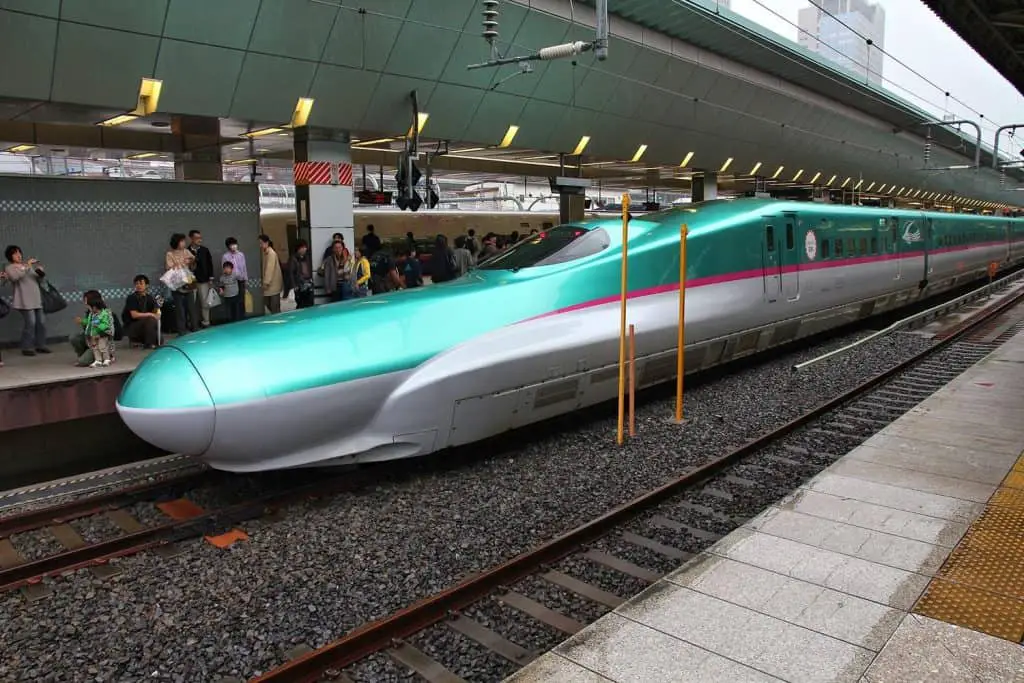
The East Japan Railway Company operates one of the fastest high-speed rail services in the world known as the Shinkansen, or the bullet train. The E5 and H5 Series Shinkansen, two of Japan’s newest bullet trains, steal the spotlight when it comes to speed and efficiency. Starting its operations on March 5, 2011, the Shinkansen boasts a line stretching 444.28 miles from Tokyo to Aomori, covering this distance in an impressive 2 hours and 56 minutes at a high speed of 198.8 mph. These state-of-the-art trains are a testament to Japan’s commitment to cutting-edge transportation technology.
7. TGV POS
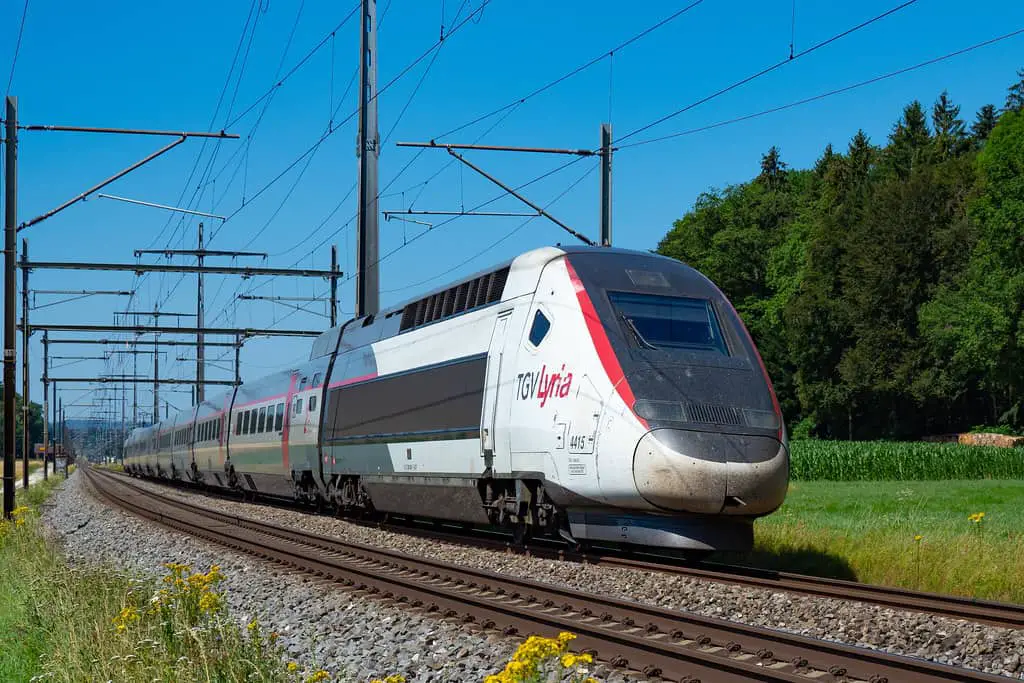
TGV POS, an exceptional member of France’s high-speed rail network, is owned and operated by the national railway company, SNCF. As part of the ever-expanding TGV rail service, TGV POS traverses an extensive network of lines that extend from the north and east of the continent to the Mediterranean. Originally developed in the late 1970s for long-route high-speed travel, TGV POS played a vital role in connecting neighboring countries. In 2017, the Project V150, an enhanced version of the TGV POS, achieved a remarkable wheeled rail speed record of 357.2 mph (574.8 kph). This record-setting gem continues to captivate travelers with its relentless pursuit of speed and performance.
6. Talgo 350 HSR
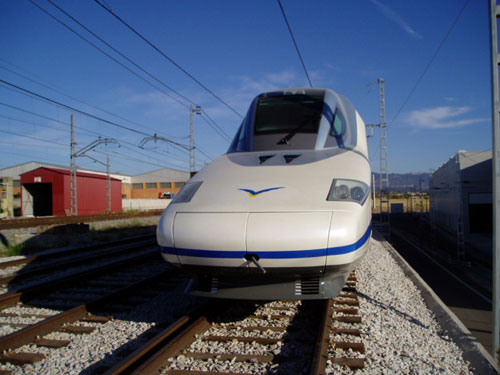
Talgo 350 is the 5th world’s fastest train, with 46 railway stations in operation in Spain, and is commonly known as El Pato (Duck in Spanish).
The T350 operates at 350 kph, but during a test run, it reached a maximum speed of 365 kilometers per hour.
From the Madrid-Zaragoza-Lleida section of the Madrid-Barcelona high-speed rail line in Spain, it began to operate in 2005 and was originally developed as RENFE AVE class 10.
It is manufactured by Patentes Talgo (Tren Articulado Ligero Goicoechea Oriol) in collaboration with Bombardier Transportation.
The train is fitted with a natural tilting system and comprises 2 cars with 12 coaches.
Designers had to intend the front end specifically for aerodynamic resistance prevention.
5. AGV Italo
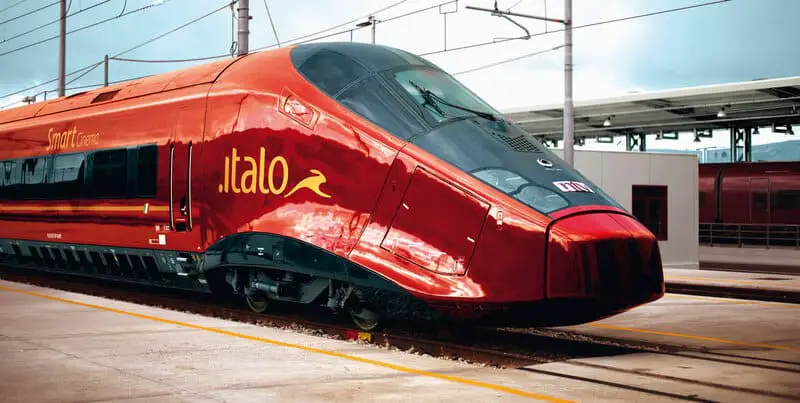
Automotrice Grande Vitesse (AGV) has been designed and developed by Alstom as an advanced high-speed train with maximum speed is 360kmph is the fastest train in the world.
It is said to be the world’s most economical and eco-friendly train, with 98 percent of its recyclable parts and a 15 percent lower lifecycle and energy costs.
Alstom displayed this train for the first time in Berlin, Germany, at the InnoTrans 2008 exhibition.
The AGV is the most energy-efficient railway to meet the Interoperability Technical Specifications (TSI).
It is the first train design in the world to combine joint carriage architecture with a distributed traction system and PMMs.
4. CRH380A
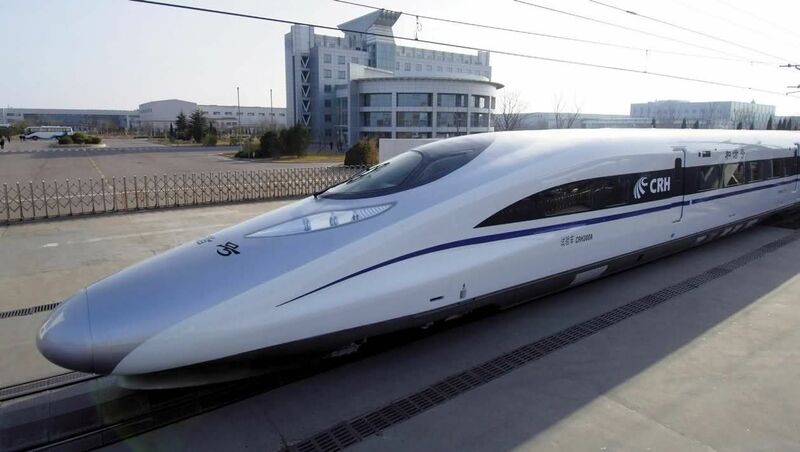
The CRH380A, the world’s fourth-fastest high-speed train, is a testament to China’s commitment to advanced railway technology. This multi-unit electric train has a maximum commercial speed of 236.12 mph, and during initial trials, it even reached an astonishing record velocity of 258.58 mph. Operated by the Chinese railway company CSR Qingdao Sifang Locomotive and Rolling Stock Company, the CRH380A features an aluminum alloy body with a fishhead-like aerodynamic design that minimizes aerodynamic resistance. The train offers a comfortable journey, equipped with various amenities such as e-displays, reading lamps, electric ports, and a VIP sightseeing section near the driver’s seat. The CRH380A is a true embodiment of China’s high-speed rail prowess.
3. Siemens Velaro E/AVS 103
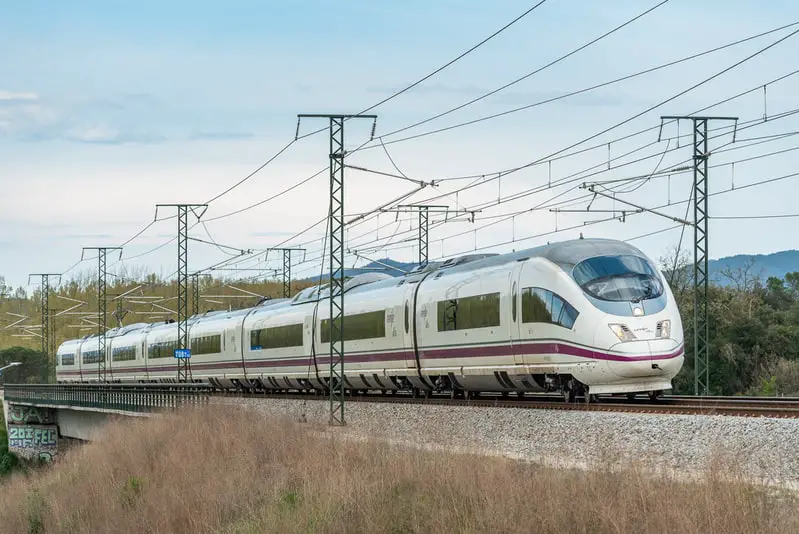
The Siemens Velaro E, also known as AVS 103, is a high-speed train used for the AVE service and operated in Spain by the state-run railway company RENFE.
The trains were constructed by Siemens, as the second member of the company’s Velaro family.
The AVE Class 103 has been certified to run at 350 km/h (217 mph). During testing between Madrid and Zaragoza on July 16, 2006, train 005 reached a speed of 403.7 km/h (250.8 mph), setting the national rail speed record for Spain.
The Velaro E/AVS 103 features advanced technology in aerodynamic profiling, energy management, and noise reduction. It uses 20% less energy compared to other high-speed trains.
The trainset develops 8,800 kW traction power for a maximum operating speed of 350 km/h (217 mph).
Overall, the AVS 103 is a remarkable high-speed train with cutting-edge features, efficient energy usage, and record-breaking speed capabilities.
2. CR400AF Fuxing
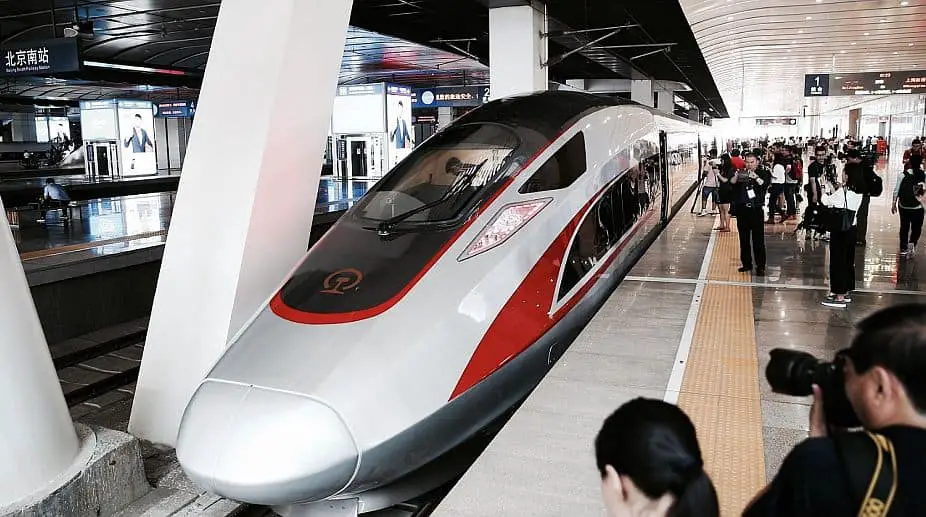
Fuxing Hao has been developed and built by the Chinese company CRRC together with China Railway as a new high-speed bullet train family.
This locally built high-speed train is operationally faster than the Japanese Shinkansen.
Fuxing can cruise from Beijing South Station to Shanghai in a travel time of just four hours., with higher reliability and operating efficiency.
Its aerodynamic design lowers air resistance and allows the train to operate more rapidly, thus reducing operating costs by efficient fuel consumption.
CR400AF has an average speed of 350 km/h and a maximum speed of 400 km/h.
1. Shanghai Maglev
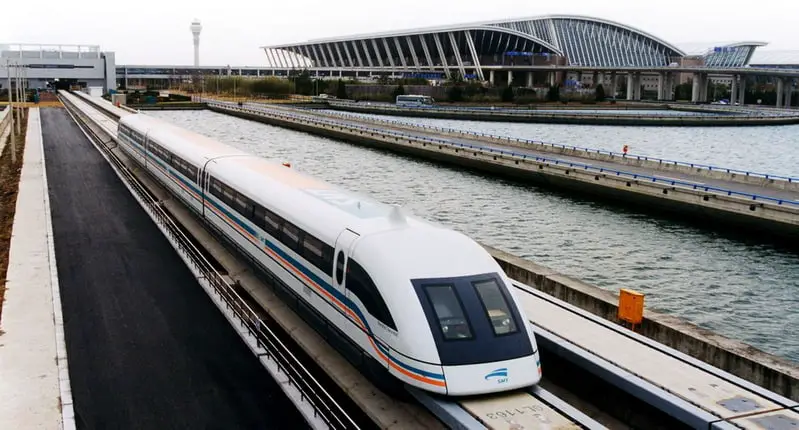
Shanghai Maglev, with the highest operating speed of 267.8 mph, is the fastest train in the world.
Shanghai Maglev Transportation Development Co. operates this service.
MagLev is an abbreviation for Magnetic Levitation, which is a method by which an object with only a magnetic field is suspended.
The magnetic force counteracts the earth’s gravitational pull (technically floating on air).
Shanghai Maglev doesn’t have wheels and floats between the train and the track on the magnetic ground.
This electromagnetic push allows the magnetic levitation train to travel over the path with the powerful magnates, as no train-track contact occurs. In just 4 minutes, the Shanghai Maglev could achieve its top speed.
German corporations built Shanghai Maglev Siemens and ThyssenKrupp.
The Shanghai Maglev public service began its service on January 1, 2004.
It operates between Pudong International Airport and the outskirts of Shanghai Long Yang Road.
Shanghai Maglev train has a total capacity of 574 passengers.
The entire journey of 20 miles (32.19 km), Shanghai Maglev takes only 7 minutes and 20 seconds. This is due to the train’s maximum speed of 267 mph (431 km/h) which makes it the world’s fastest commercial train. It was the first commercially operated high-speed maglev train in the world.
Technology had improved exponentially since the great Thomas Savery invented the first steam engine, and Rudolf Diesel invented the diesel engine.
Also, respect of special thanks to that father-son duo George Stephenson who built first Steam engine based locomotive.
From that moment, we have gone from the fastest American steam locomotive to the fastest Maglev.
It’s evident according to World Speed Survey 2019 published in Railway Gazette International magazine that China has the several fastest bullet trains than any other country.
The future is dazzling for these track-based long caravans. Please share this post with your friends on Social Media.
